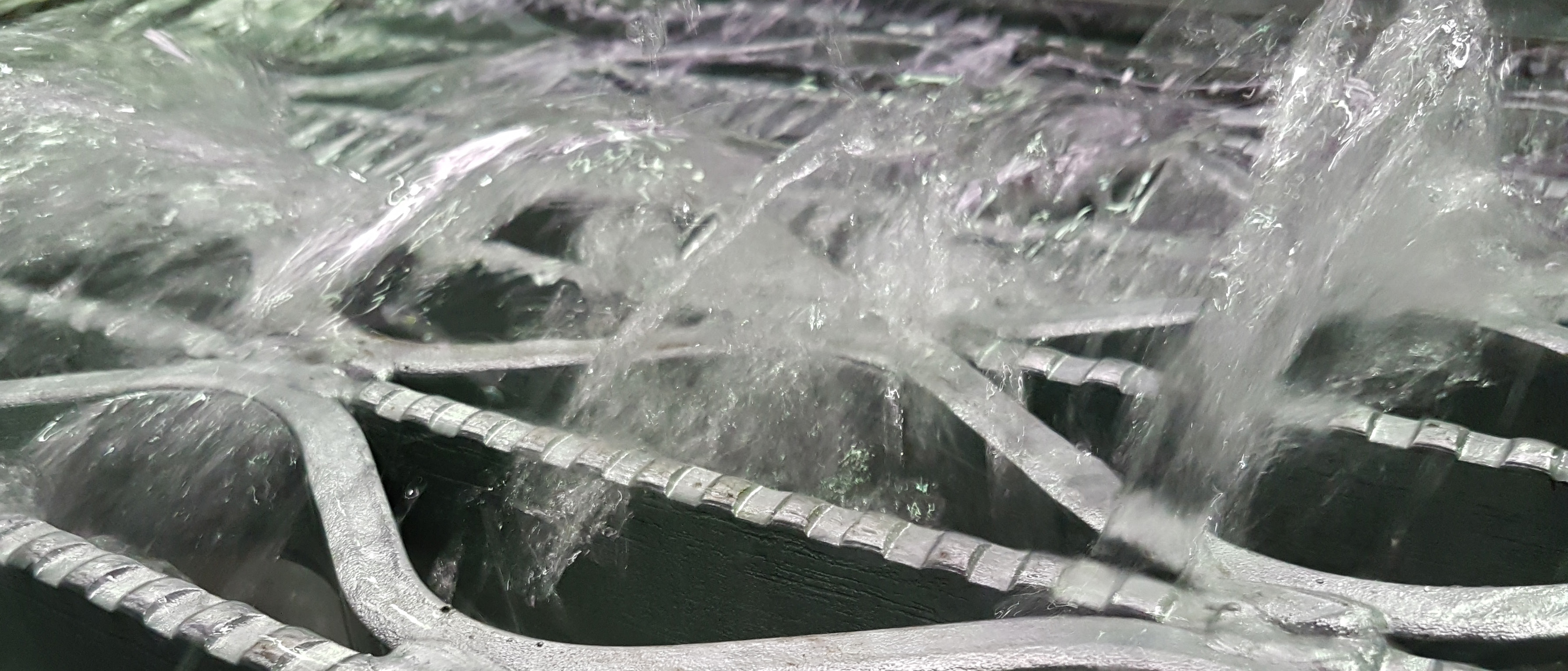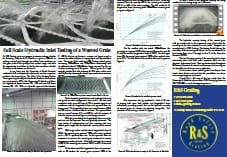Full Scale Hydraulic Inlet Testing of a Weaved Grate
At R&S Grating, we’re no strangers to extreme testing, whether it’s throwing a fully loaded B-Double at a grate at 100km/h or putting a weaved grate through one million load repetitions, we take great pride in the quality of our product range and relish the opportunity to test them to the harshest conditions that the Australian environment can throw at it.
In our latest test, the University of South Australia conducted a full-scale hydraulic inlet test on one of our signature products, the weaved grate. The 17m x 3.2m Roadway Surface Drainage test rig, the only of its kind in the Southern Hemisphere, was constructed in 1991 at the University of Adelaide and allows for longitudinal slopes between 0% – 16% and cross-fall slopes between 0% – 5%. With an adjustable approach flow between 0 – 400 l/s, the test rig features a capture and bypass pond to measure the collected water at varying slopes and approach flow rates. The rig was fitted with two R&S Grating weaved grates, measuring 1900x600mm and 1900x900mm respectively, with an additional inlet of 1900x450mm being measured by the use of plates covering part of the grates.. Weaved grates are a high strength product that offer between 65-75% open surface area, while still easily achieving the bicycle tyre penetration resistance (BTPR) requirements of AS3996.
Click to read more.
Both a standard grated inlet pit and combined side entry and grated pit inlet configuration were tested. All tests were conducted with a cross-fall slope of 3%, to simulate typical road conditions, with the longitudinal slope and approach flow rate being varied. The longitudinal slope was varied between 0.25% and 8% and was a fixed variable for each test. The approach flow rate was varied between 0 l/s and 400 l/s, with the contents of both the capture pond and bypass pond being measured.
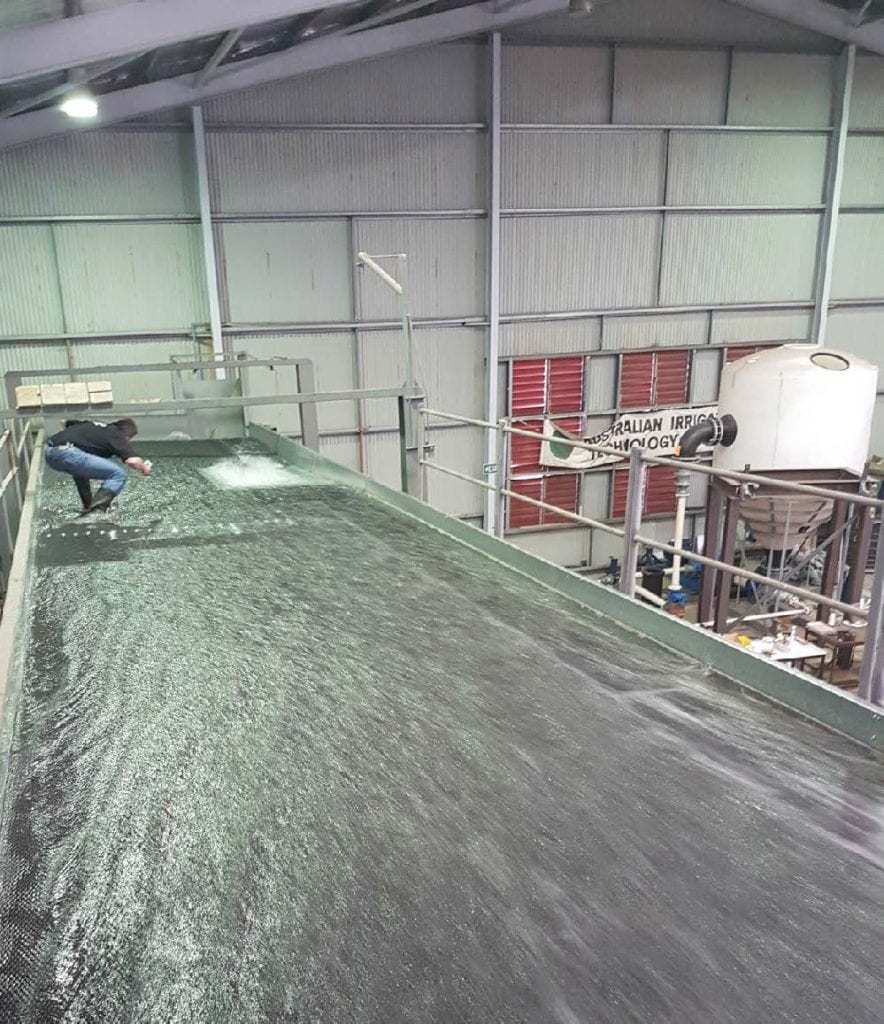
With the grates fitted, the longitudinal slope was set for each test and the approach flow was gradually increased. The large variety of configurations and clear opening inlet sizes offered great insight into the hydraulic capacity of the weaved grate.

With larger inlets, and the lowest longitudinal slope of 0.25%, the grate captured 100% of the water supplied, up to a 180 l/s approach flow rate. As the approach flow rate continued to increase, the grate continued to capture staggering quantities of water. At the full approach rate capacity of 400 l/s, the weaved grate captured 340 l/s, or 85% of the water supplied.
At the other end of the longitudinal slope rate spectrum, with an 8% decline, the weaved grate captured 100% of the water supplied, up to an approach flow rate of 80 l/s. At the rig’s approach flow rate capacity, 400 l/s, the grate captured 265 l/s, or 66% of the water supplied. The full results for all longitudinal slopes featuring three 1000x800mm grates are given in Figure 3.
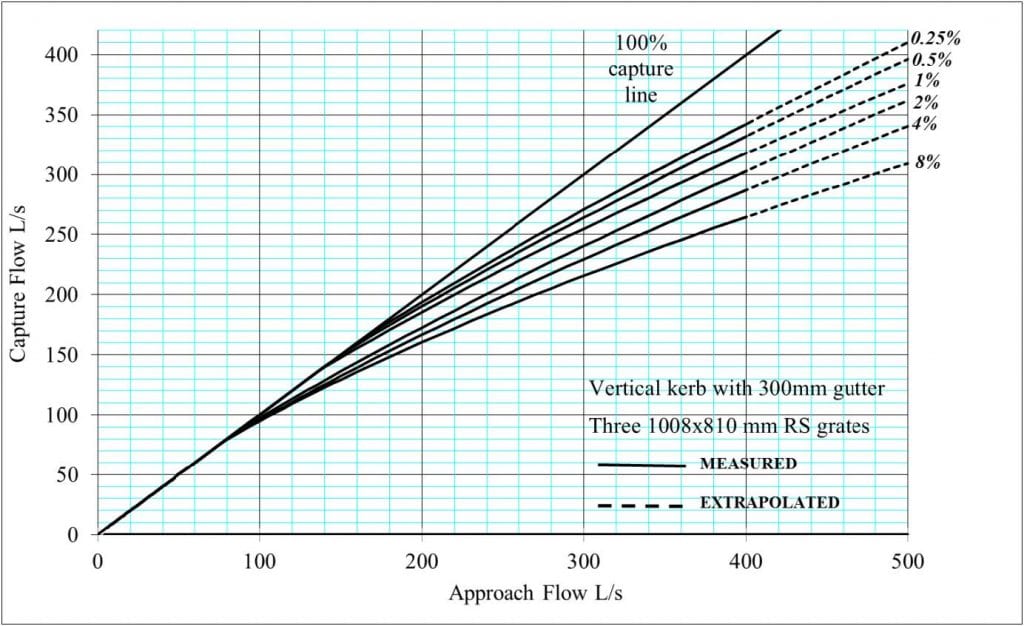
For the smallest inlet size tested, 1000x450mm, the grate captured 100% of the approach flow water up to 85 l/s with the smallest longitudinal slope of 0.25%. For the largest slope, 8%, the grate captured 100% of the supplied water up to 38 l/s. The full results of the smallest inlet size are given in Figure 4.
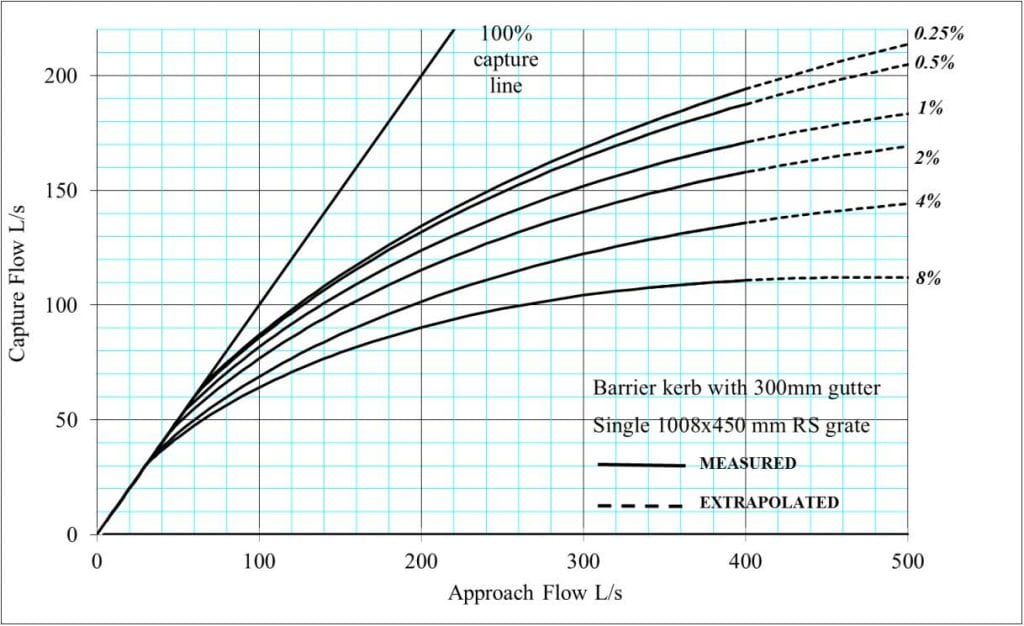
The impressive test rig conducted a total of 48 tests of varying inlet sizes, kerb profiles and longitudinal slope inclinations, providing superb data on the hydraulic capacity of weaved grates for almost any situation imaginable. The schematic of the test rig is shown in Figure 5.
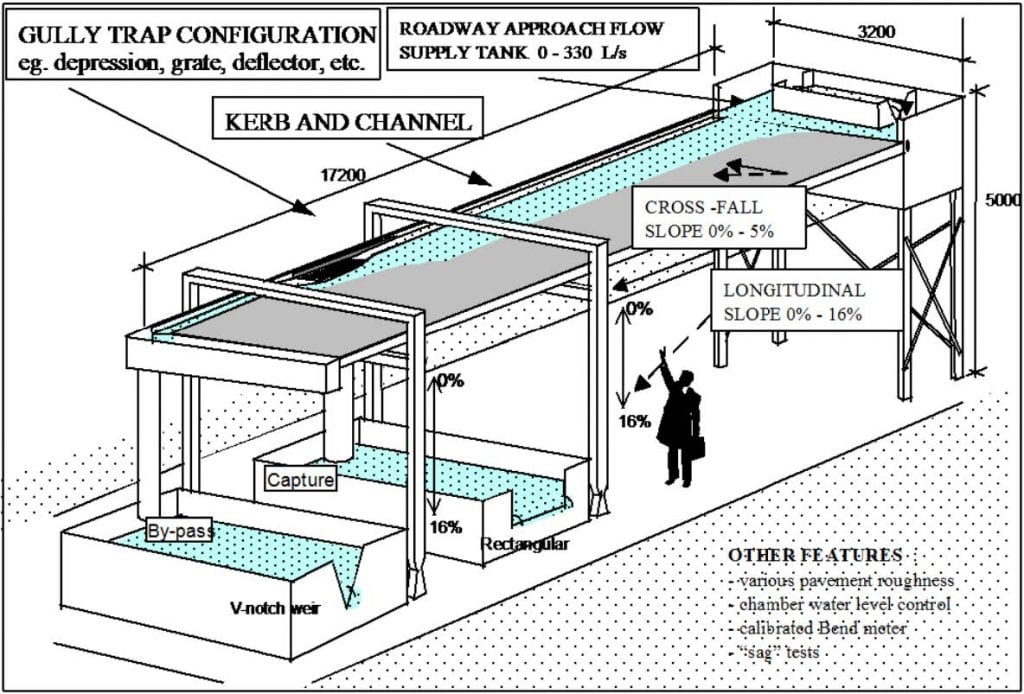
The hydraulic capacity testing of the weaved grate adds yet another tick to the impressive range of tests that the weaved grate has been subjected to and passed. Designed and manufactured at R&S Grating’s Dandenong South factory, the versatility of the weaved grate allows it to be manufactured to load ratings from class C through to class G of the Australian Standard AS3996.
The load-bearing capacity of the weaved grate has been extensively tested with both static, repetitive loads and also dynamic, high-impact loads. Now used extensively throughout Melbourne’s network of arterials and freeways, the weaved grate has stood the test of time in every application.
To learn more about weaved grates, how they’ve been tested, where they’re used and what the possibilities are, please visit www.grating.com.au/weaved.
Download our publication in the Spring 2017 Access Magazine (2.42 mb) below, or access a copy from the MWOA website:
If you’d like a full copy of the test results from the University of Adelaide, please contact R&S Grating by phone on (03) 9238 5888 or email sales@grating.com.au.

